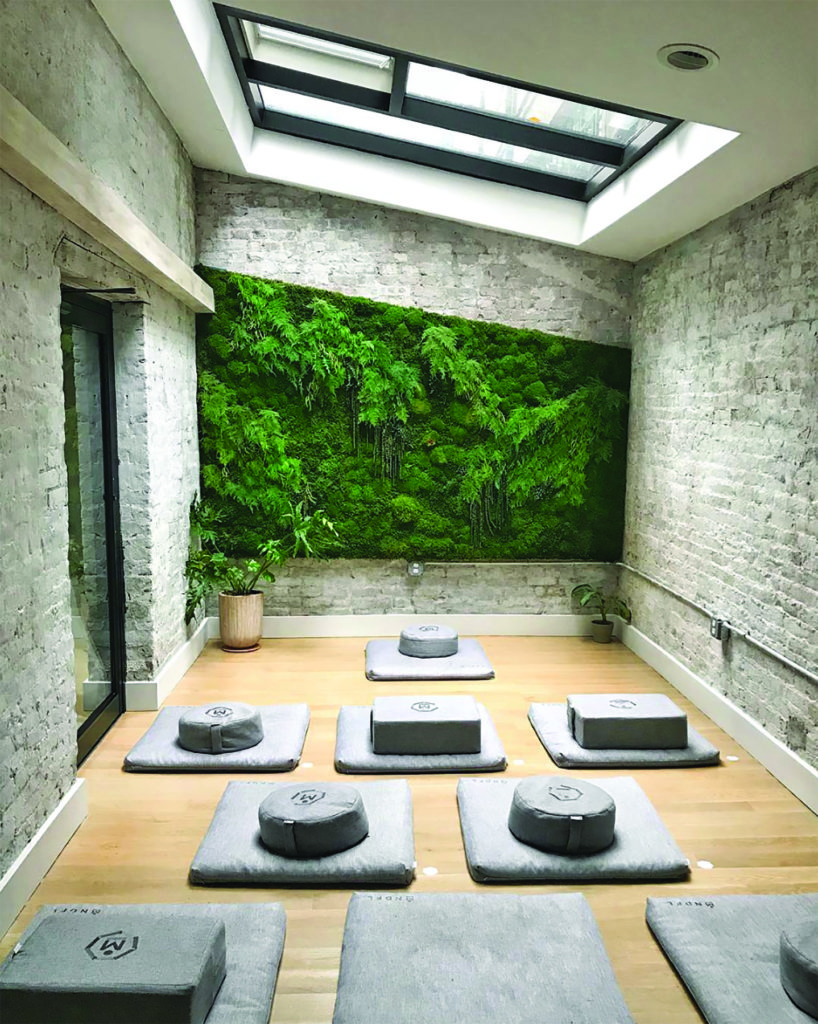
by Ellie Burrows Gluck
As the co-founder of a business called MNDFL and a meditation teacher, naturally I have a favorite buzzword: mindful. I’m biased, of course, and truth be told, I’m in a complete love-hate relationship with the word. On the one hand, I’m absolutely thrilled that people are paying attention to the word and all that it implies. It’s no longer someone in red robes on the other side of the world extolling the virtues of a meditation practice. On the other hand, the word has amassed enough cultural cachet that it’s been hijacked to brand things—Whole Foods apparently sells something called Mindful Mayonnaise.
In the meditation world, many of us have a favorite definition of mindfulness, which comes from preeminent master teacher and founder of Mindfulness-Based Stress Reduction, Jon Kabat-Zinn: “The awareness that emerges through paying attention on purpose, in the present moment, and nonjudgmentally to the unfolding of experience.” Basically, mindfulness is the act of purposefully bringing full attention to the present moment with zero judgment of what’s occurring in that moment. For all the buzz, it’s a rather unsexy objective experience, when you really break it down.
So how can mindfulness show up in our day-to-day lives beyond simply appearing in a supermarket aisle? If you’re sitting across from a loved one and he or she is talking to you, then in that moment you are engaging in the act of listening. If you’re being mindful in that moment, you are completely placing your attention on this person and listening to him or her to the best of your abilities. You are not thinking about your to-do list, checking your phone, interrupting with your latest idea, or anxiously waiting to respond to whatever it is they are saying. Instead, you are fully showing up for that person by way of simply listening in that moment.
If you want to develop mindfulness in daily life, you ought to start with mindfulness meditation. Because if we can sit and be aware of something as simple as the breath, then we can bring that practice to the more dynamic activities that are a part of everyday life.
Our lives can be quite chaotic and mindfulness can help anchor us into the present moment. As a New Yorker, I know I’ve often found myself in many agitated states. Perhaps I’m walking down the street while simultaneously sending a work email, calling my business partner about a meeting I’ve just had, and heading into a café to order a matcha. In that moment, I might be ticking three things off a to-do list. It’s all…a blur.
What would it feel like if I sat somewhere quiet and made time to go through my inbox without looking at a phone, an internet distraction or taking a call? What would it feel like if I called my business partner and wasn’t looking at any of my screens or going anywhere while we connected? What would it feel like if I took a walk to the café down the street and noticed the quality of the air and light that day? What would it feel like to order that tea and sit there simply sipping it without doing anything else?
I’ll bet that tea would taste better, that walk would be more enjoyable. I would be more present for that conversation, more emails would probably get answered (maybe with even more thoughtful responses).
If we are able to become aware of how we are showing up in any given moment, we can learn a lot about ourselves. I may have spent thousands of hours on a cushion, but I am still very much a work in progress when it comes to mindfulness. It’s a practice. And I can speak firsthand from my own experience, that being totally present feels different than being a killer multitasker, no judgment need apply. mndflmeditation.com



